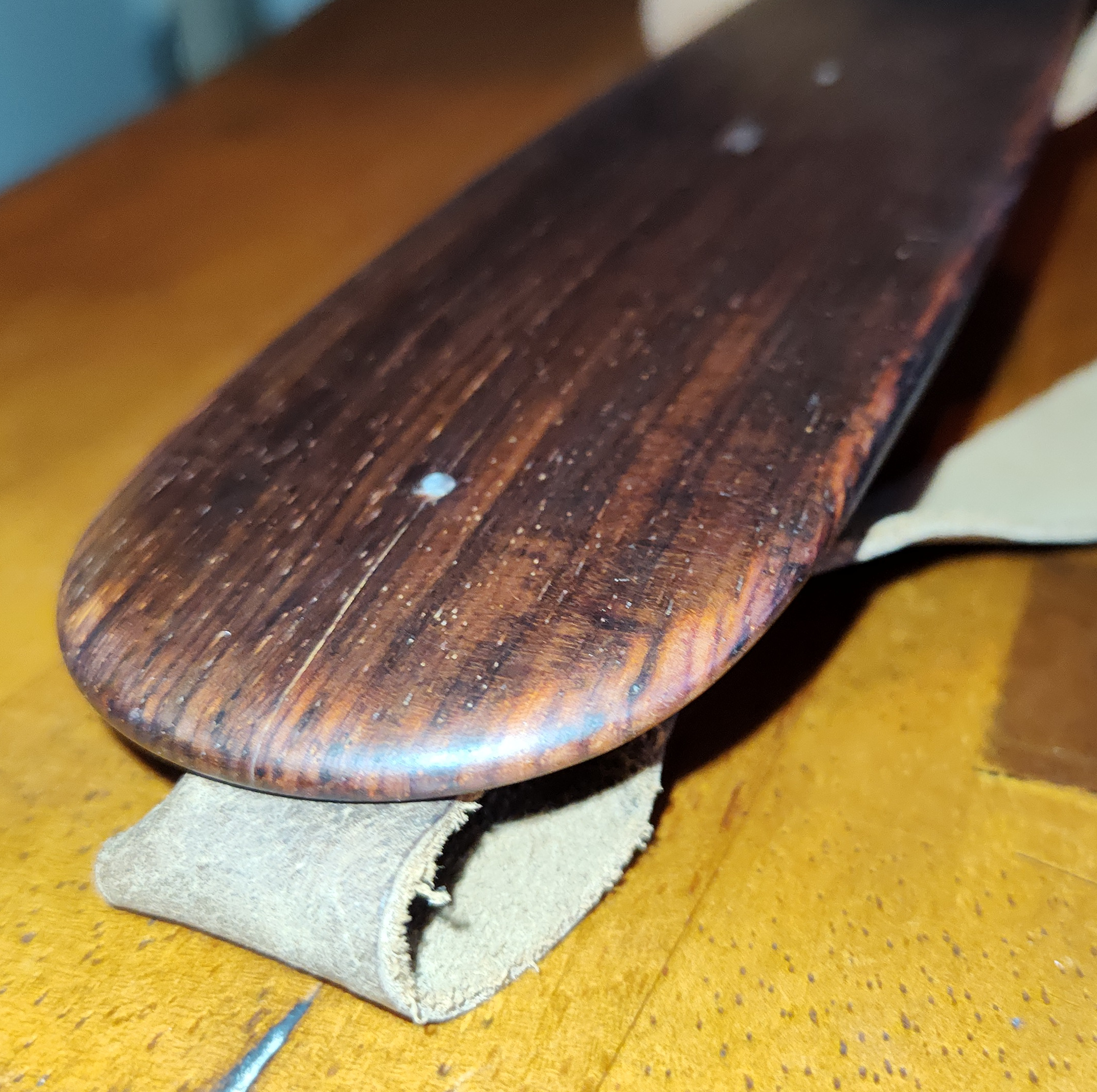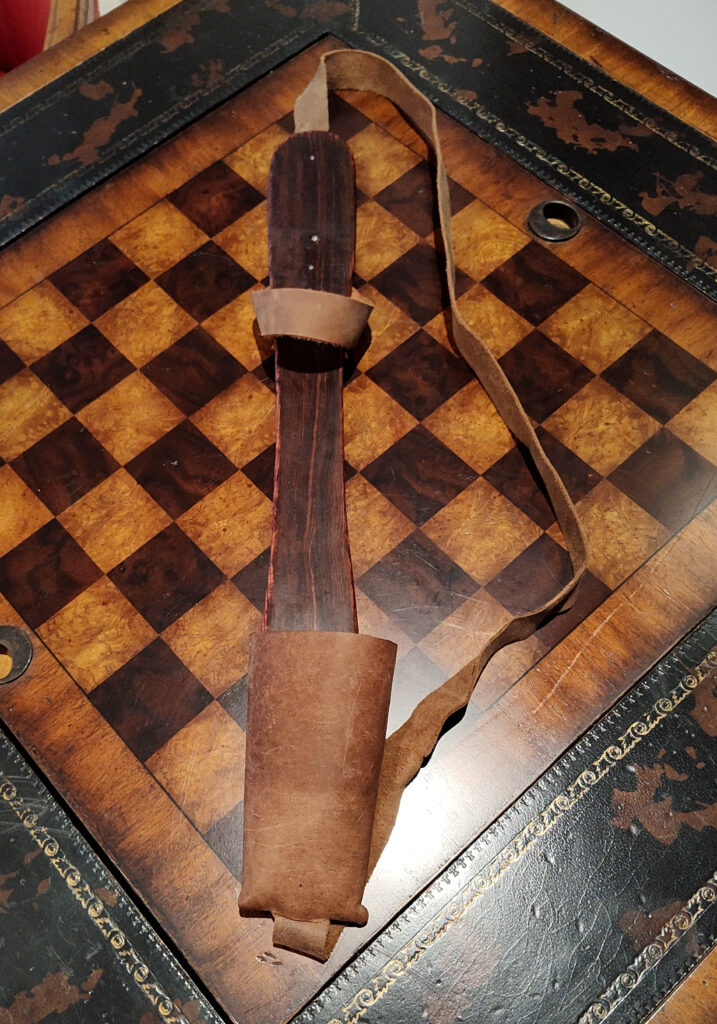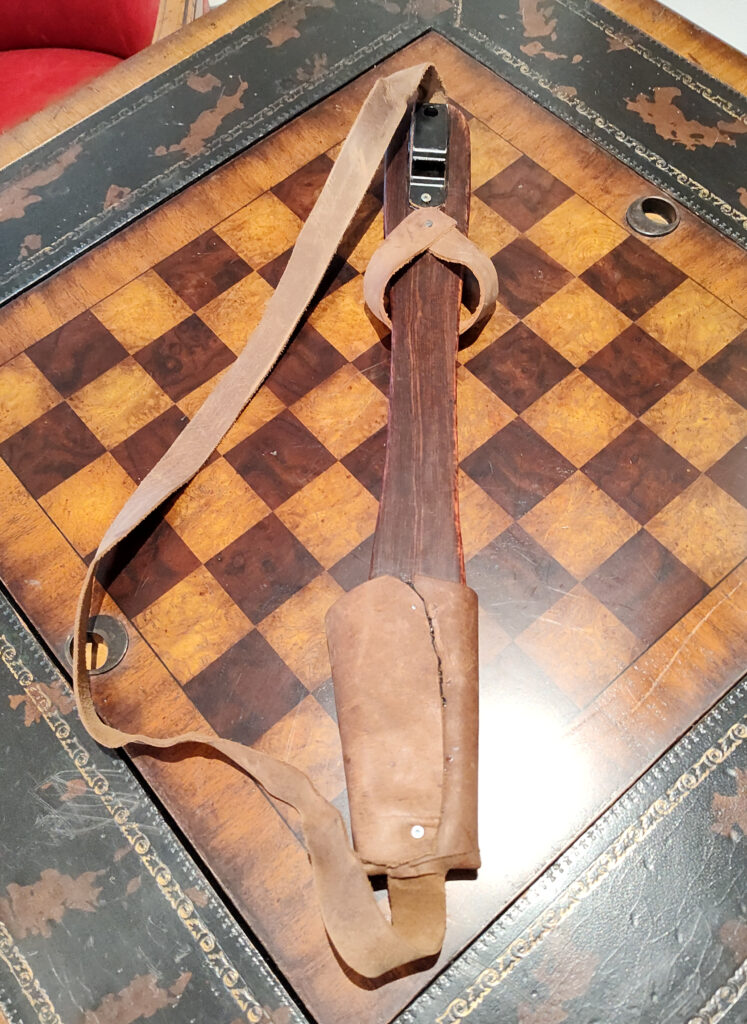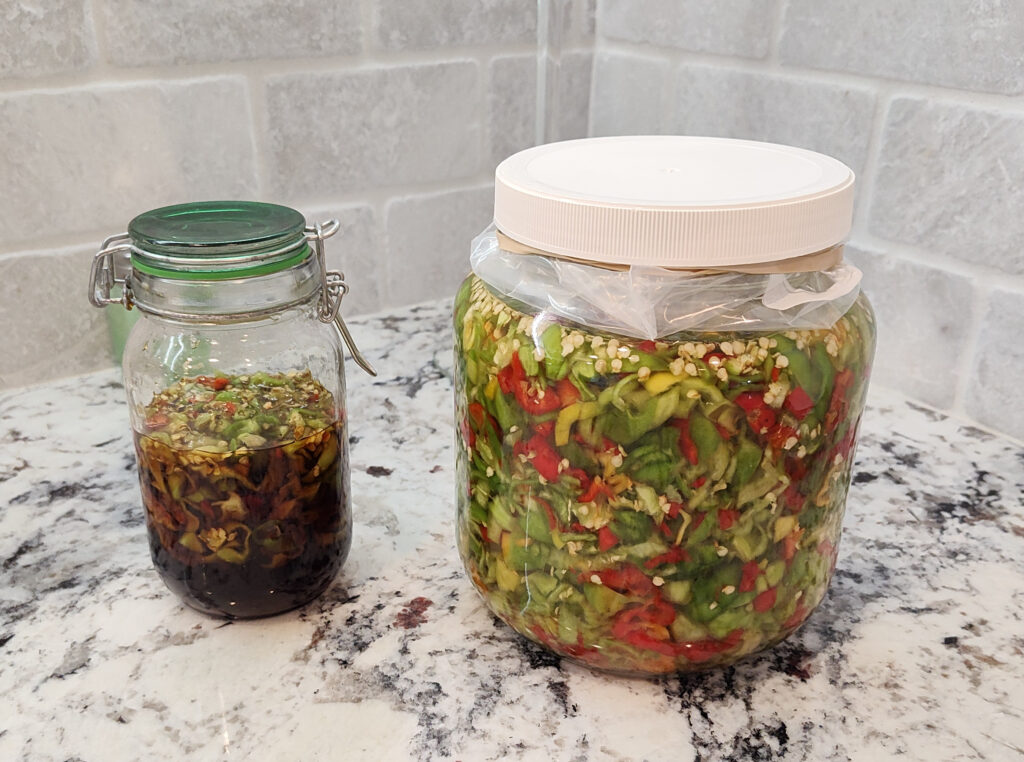
I’m sometimes surprised by the things I overlook. In this case, among a dwindling pile of discounted cocobolo scraps I thought I’d pilfered sufficiently, a stack of thin rips in good shape revealed itself. I bought all that seemed fit and immediately started a new quiver. The piece is approximately 6mm; thin, but sturdy. The image above shows the hairline split caused by carelessness with the screw. A larger drill bit would have avoided the problem. However, the belt clip that the screw and glue is holding, should prevent the split from worsening and the quiver feels solid. Cocobolo is a superb wood, finishing to an almost varnished, silky surface with nothing more than 220 grit sandpaper. Burnished with a bit of beeswax and oil, it’s not only pretty, but pleasant to handle. As most of the quivers I’ve been crafting, it is intended to be worn on the back or on the belt. The material is leather.



With this quiver, I learned to be cautious with the size of the pilot holes and torque of the screws. I would prefer to avoid screws altogether, but I haven’t yet settled on a method to do so. For the next version, I’ll use a larger bit and rely on glue while tightening the screws less. The pouch for the field points could probably be both sewn and glued to the wood. The thinness of the wood is pushing its virtues of sturdiness close to the limit, though done right, it makes an inexpensive, unique, lightweight and dependable quiver that’s pleasant to behold.
But no quiver is complete without fermented habaneros, no? I struggle to think of anything that’s complete without habaneros, other than, perhaps, personal hygiene products.

The smaller jar to the left is simply chopped habaneros in fish sauce, similar to the Thai chili condiment found at the better Thai restaurants. The jar to the right is chopped habaneros and garlic in a brine consisting of one Tbsp of real salt to two cups water. This mixture will sit at room temperature for between 5 and 13 days, depending on the weather. I’ve sometimes pureed the results and find the process yields the best results, but when lazy, leave them as is. Some advise wearing gloves when mangling habaneros. I do not, and my hands will often burn for days, most notably when exposed to warmth, eg showers, hand washing, etc. It’s something to consider, and thorough hand-washing is paramount before grooming one’s self or others.
